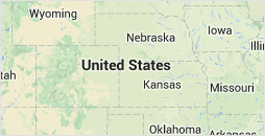Emily Clarke
PHONE NUMBER : -----
Map

Guide to Understanding AWS RDS
Databases are a lesser-known aspect of web development. They're a critical back-end feature that makes modern websites possible. Without them, sites couldn't collect, store, or access the information users need to have a smooth browsing experience.
One of the most popular database services to emerge in the last couple of decades is Amazon Web Services Relational Database Service (AWS RDS).
What is AWS RDS?
Simply put, RDS is a collection of several managed services. These services make it easy to set up, manage, and scale cloud databases. AWS is one of the most trusted cloud service providers to date, and it powers millions of sites around the web. RDS is one of many impressive services to make your sites and web applications perform their best. The service is easy to set up, and a platform for AWS RDS recovery ensures that your work stays safe no matter what happens.
Currently, you can choose from seven database engines when you use RDS. These include:
• Amazon Aurora with MySQL compatibility
• Amazon Aurora with PostgreSQL compatibility
• MySQL
• MariaDB
• PostgreSQL
• Oracle
• SQL Server
You can connect your app or site to any of these engines to take advantage of the managed RDS features. RDS offers security and compliance features, automated patching and performance upgrades, monitoring and alert features, data durability and redundancy, scalability, and more.
The Benefits of AWS RDS
There are many reasons to consider using RDS. For many developers, it's a way to break free from legacy commercial databases. While those systems worked well for a while, they're far from the best choice. Many older databases are restrictive and don't facilitate growth in the same way that AWS RDS does.
Scalability should always be a top priority. Growth is critical to continued success and revenue. But when you're working with older databases, that's not possible. AWS RDS has high availability throughput and storage scalability. Pair that with fully managed features, and you can continue to grow. A platform for AWS RDS recovery protects you in the worst-case scenario, allowing your application to flourish for years to come.
Author Resource:-
Emily Clarke writes about tech, online education, programming lessons and more. You can find her thoughts at recovery solution blog.
